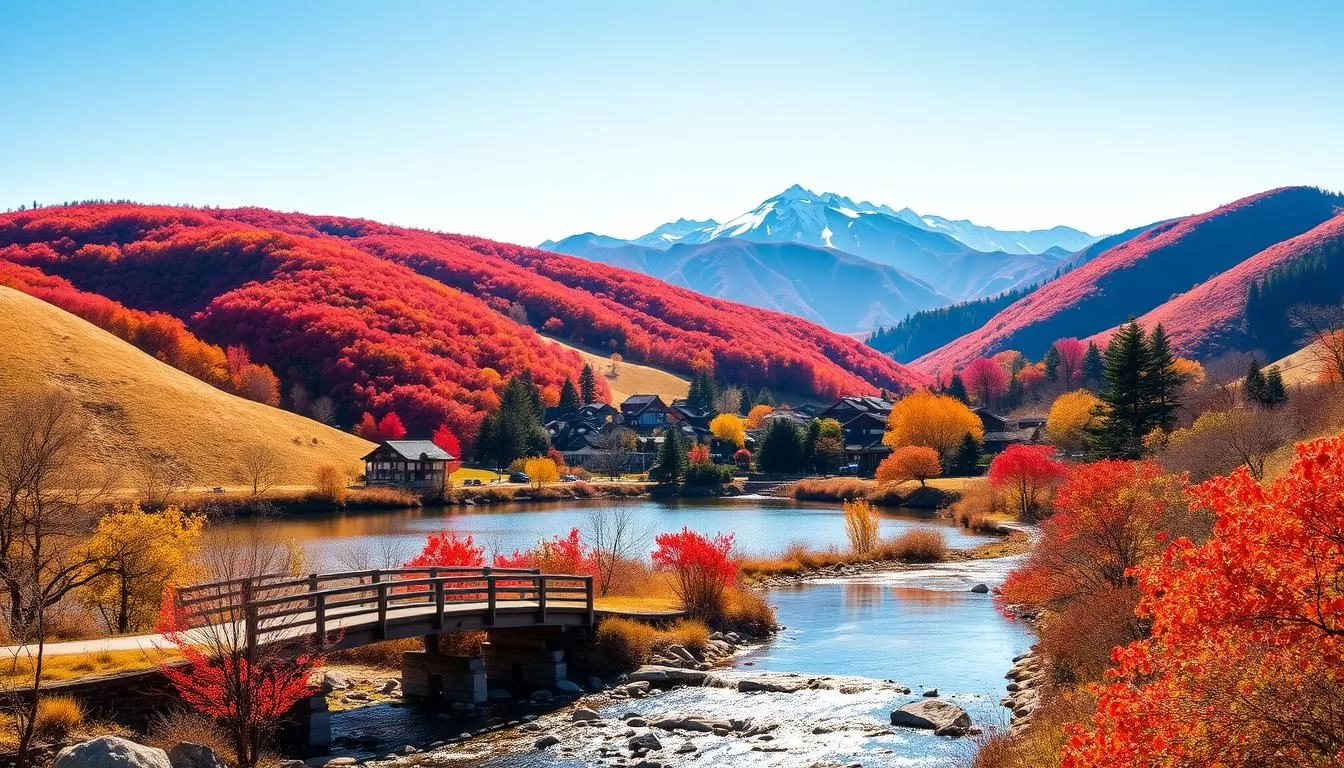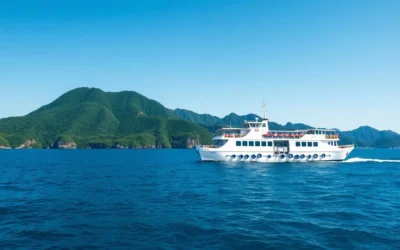✓ Accommodations ✓ Flights ✓ Rental Cars
Planning a trip to Iwate Prefecture in northern Japan can be a thrilling experience, with its unique blend of traditional and modern attractions. To make the most of your visit, understanding the region’s distinct seasons and weather patterns is crucial.
The Tohoku region, where Iwate is located, offers a diverse range of experiences throughout the year, from the beauty of spring cherry blossoms to the excitement of winter snow festivals. Each season brings its own charm and appeal, making the timing of your visit a critical factor in planning your trip.
By understanding the best time to visit, you can tailor your travel plans to enjoy the activities, festivals, and natural phenomena that Iwate has to offer, ensuring a truly memorable travel experience in this beautiful part of Japan.
The Climate of Iwate Prefecture
The climate of Iwate Prefecture is shaped by its position in northern Tohoku, offering diverse seasonal experiences. Iwate’s unique geography plays a significant role in its climate, with its location influencing the weather patterns throughout the year.
Geographic Location in Northern Tohoku
Iwate Prefecture is situated in the northern part of Tohoku, Japan. This region is known for its rugged terrain, with mountains and coastal areas contributing to the varied climate. The prefecture’s geography is characterized by its mountains, valleys, and coastal plains, which all impact the local weather conditions.
The northern location means that Iwate experiences a more pronounced difference between seasons compared to southern Japan. This results in colder winters and cooler summers, with significant snowfall in the mountainous areas.
Four Distinct Seasons and Weather Patterns
Iwate Prefecture experiences four clearly defined seasons, each offering distinct weather patterns and travel experiences. You can plan your trip according to the season that suits your preferences.
- Spring (March to May) brings gradually warming temperatures, melting snow, and the famous cherry blossom season.
- Summer (June to August) sees warmer temperatures, with a rainy season in June followed by higher humidity in July and August.
- Autumn (September to November) offers comfortable temperatures and spectacular autumn foliage.
- Winter (December to February) transforms Iwate into a snowy wonderland with temperatures often below freezing.
The distinct seasonal patterns create different travel experiences throughout the year. You can choose the best month for your visit based on your weather preferences and planned activities.
| Season | Months | Temperature Range | Notable Features |
|---|---|---|---|
| Spring | March to May | Cool to Mild | Cherry Blossoms |
| Summer | June to August | 68-86°F (20-30°C) | Rainy Season, Higher Humidity |
| Autumn | September to November | Comfortable | Autumn Foliage |
| Winter | December to February | Below Freezing | Snowfall, Snow Activities |
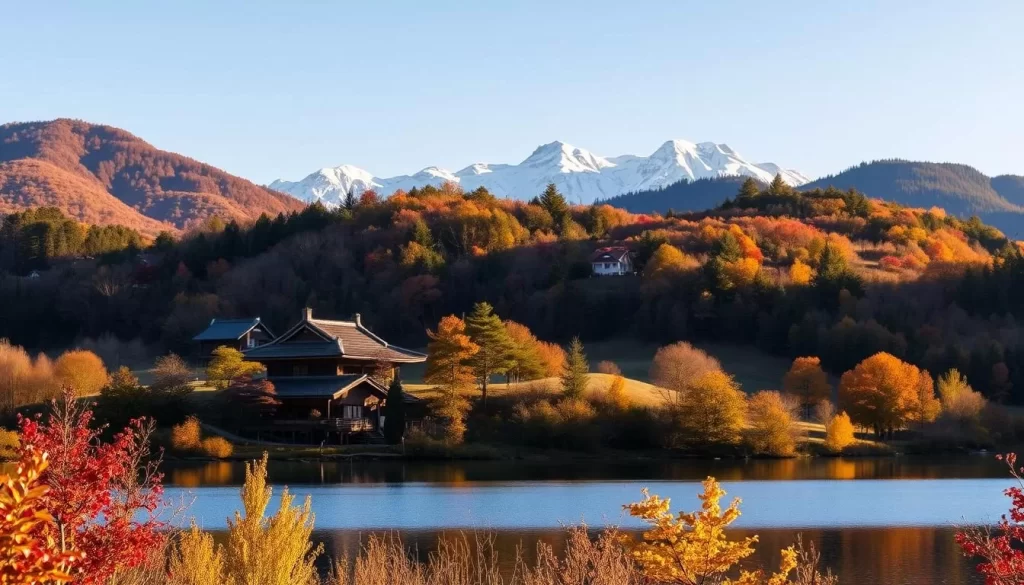
Spring Awakening: March to May
With the arrival of spring, Iwate Prefecture awakens from its winter slumber, offering a plethora of experiences that showcase its rich cultural heritage and breathtaking landscapes. As the weather warms up, the region transforms into a vibrant destination, perfect for outdoor enthusiasts and culture lovers alike.
Cherry Blossom Season in Iwate
Spring in Iwate is synonymous with the breathtaking beauty of cherry blossoms. The Kitakami Tenshochi Cherry Blossom Festival, held from mid-April to early May, is a highlight, featuring boat rides along the cherry tree-lined river, food stalls, and stunning evening illuminations of the blossoms. You can enjoy this picturesque scene while exploring the local cuisine and culture.
The cherry blossom season is an ideal time to visit Iwate, as the mild weather makes it perfect for outdoor activities. You can stroll along the riverside, enjoy picnics under the blossoms, or simply take in the beauty of nature.
Spring Festivals and Outdoor Activities
Spring is a great time to visit Iwate for its vibrant festivals and outdoor activities. The region comes alive with events like the Chagu Chagu Umakko Horse Festival in Morioka, which marks the transition from spring to summer. Although it’s in early June, the preparations and anticipation begin in spring, showcasing the region’s rich cultural traditions.
For outdoor enthusiasts, spring is the best time to explore Iwate’s lower elevation trails as the snow melts and wildflowers bloom. Geibikei Gorge becomes particularly attractive, offering boat rides through dramatic rock formations surrounded by newly green foliage. You can also enjoy hiking, fishing, and exploring historical attractions like Chusonji Temple in Hiraizumi, a UNESCO World Heritage site, with fewer crowds than in the peak summer months.
| Activity | Location | Best Time |
|---|---|---|
| Cherry Blossom Viewing | Kitakami Tenshochi | Mid-April to Early May |
| Hiking | Lower Elevation Trails | March to May |
| Fishing | Iwate’s Rivers | Spring |
| Boat Rides | Geibikei Gorge | Spring |
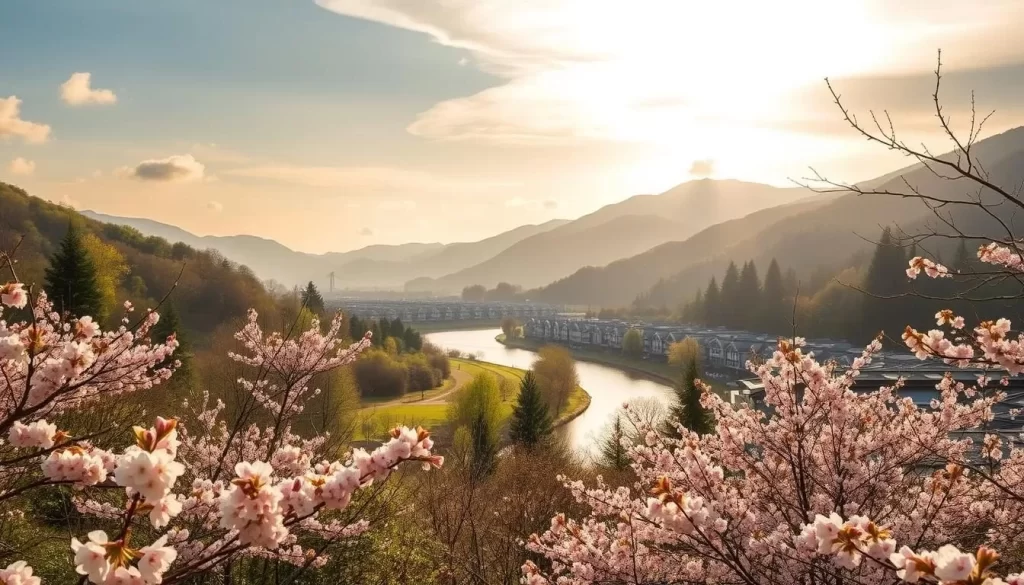
As you plan your trip, consider the various attractions and places Iwate has to offer during spring. From cultural festivals to outdoor adventures, Iwate Prefecture is a destination that promises a memorable experience.
Summer in Iwate: June to August
As summer arrives in Iwate Prefecture, the region transforms into a vibrant cultural hub. The warm weather brings with it a plethora of festivals, outdoor activities, and natural beauty that makes Iwate a great destination during this time.
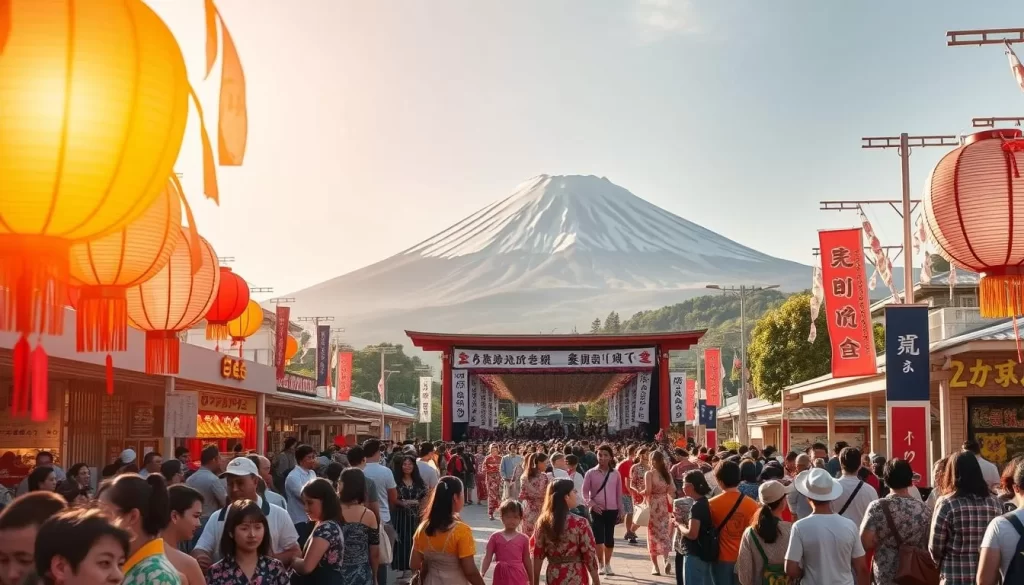
Navigating the Rainy Season and Humidity
Summer in Iwate is characterized by a rainy season that typically occurs in June and July, followed by hot and humid weather. Despite the humidity, summer is a great time to enjoy the region’s cultural heritage through its vibrant festival season. Many local festivals and fireworks displays are held throughout July and August, attracting both locals and visitors.
The rainy season can be challenging, but it’s also a great opportunity to explore Iwate’s indoor attractions or enjoy the beautiful landscapes that are refreshed by the rain. As the humidity rises, the region’s hot springs (onsen) become an even more appealing way to relax and unwind.
Summer Festivals and Mountain Escapes
Summer is a peak season for festivals in Iwate, with events like the Morioka Sansa Odori Festival taking center stage. This festival, held from August 1-4, is one of Tohoku’s largest, featuring thousands of taiko drummers and dancers parading through the city streets each evening. Additionally, the coastal city of Miyako hosts spectacular fireworks festivals in July and August, offering impressive pyrotechnic displays over the Pacific Ocean.
When the summer heat becomes uncomfortable, Iwate’s mountainous areas provide a cool retreat. Places like Mount Iwate and the Hachimantai plateau offer hiking trails with alpine flowers, volcanic landscapes, and panoramic views. The Appi Kogen resort area transforms into a summer recreation center, offering activities like mountain biking, tennis, and golf in refreshingly cool mountain air.
| Festival/Event | Location | Date |
|---|---|---|
| Morioka Sansa Odori Festival | Morioka | August 1-4 |
| Miyako Fireworks Festival | Miyako | July and August |
| Appi Kogen Summer Activities | Appi Kogen | June to August |
Autumn Colors: September to November
Autumn in Iwate is a season of transformation, where the landscape is painted with vibrant colors, and the air is filled with the aroma of freshly harvested produce. As the summer heat dissipates, the prefecture transforms into a haven for outdoor enthusiasts and culture lovers alike.
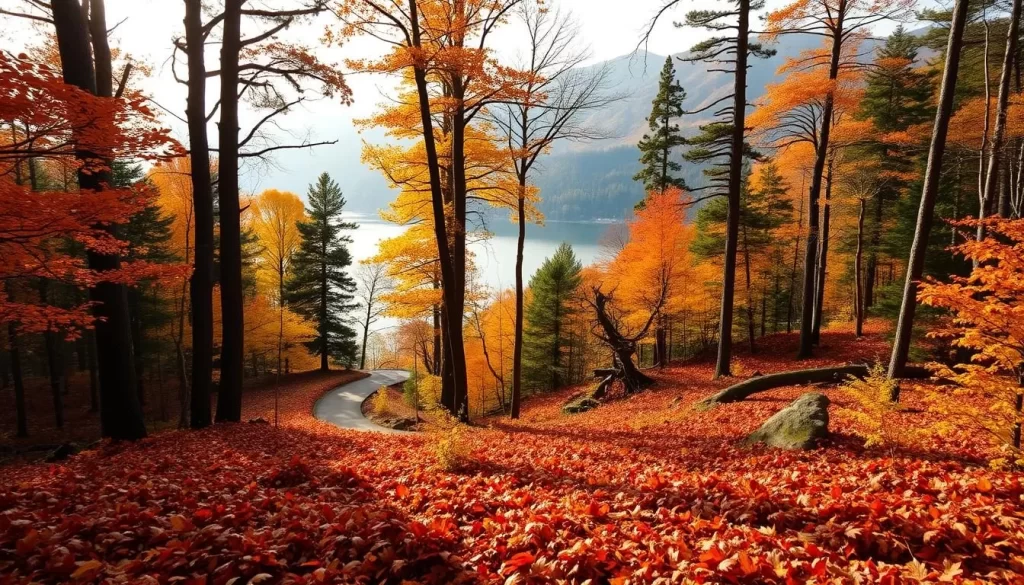
Fall Foliage Viewing Spots in Iwate
Iwate offers numerous scenic spots for fall foliage viewing, with the colors starting in the north and gradually moving south. This natural spectacle provides a perfect backdrop for hiking, photography, and other outdoor activities. Some popular spots include:
- The Hachimantai Aspite Line, a 27-kilometer scenic driving route that takes you through tunnels of autumn colors at different elevations.
- Various mountains and gardens that are perfect for hiking and enjoying the fall foliage.
Harvest Season and Cultural Celebrations
Autumn in Iwate coincides with the harvest season, bringing a bounty of fresh local produce and seasonal cuisine. You can experience the local culture by participating in harvest festivals and enjoying traditional foods. Some highlights include:
- Iwate’s famous apples, such as Fuji and Tsugaru, which reach their peak flavor in fall.
- The rice harvest in September and October, which brings celebrations in rural communities, featuring traditional harvesting methods and local festivals.
- Traditional moon-viewing parties (tsukimi) in September or October, where you can appreciate the harvest moon while enjoying seasonal foods.
The comfortable temperatures during autumn, ranging from 45-70°F (7-21°C), make it an ideal time for outdoor activities and exploring the prefecture’s natural beauty. Whether you’re interested in hiking, food, or cultural experiences, Iwate in the autumn season offers something for everyone, making it one of the best times to visit.
Winter Wonderland: December to February
From December to February, Iwate Prefecture is at its most enchanting, with snow-covered landscapes and hot springs inviting you to unwind. As you experience the quintessential Japanese winter, you’ll discover a serene and magical world that’s perfect for a weather-savvy trip.
Ski Resorts and Snow Activities
Iwate Prefecture offers a variety of snow activities during the winter months. You can enjoy skiing at one of the many resorts, or try snowboarding, ice skating, or even snowshoeing. For a unique experience, take a ride on the “kotatsu train” on the Iwate Galaxy Railway, where you can warm your legs under heated tables while enjoying the scenic snow-covered landscapes.
- Experience the thrill of skiing or snowboarding at one of Iwate’s ski resorts.
- Enjoy ice skating or snowshoeing in the beautiful winter landscapes.
- Take a relaxing ride on the “kotatsu train” while enjoying the snowy views.
Hot Springs and Winter Illuminations
After a day in the snow, unwind at one of Iwate’s many hot springs (onsen). Tsunagi Onsen near Morioka is a popular destination, offering traditional ryokan inns with day-use baths where you can experience the contrast of hot water and cold winter air. For a more secluded experience, visit the remote Nyuto Onsen area on the border of Iwate and Akita prefectures, known for its centuries-old baths set in snowy forests.
Winter is also the time for illumination events throughout Iwate, with Morioka’s Iwate Park and Koiwai Farm hosting spectacular light displays. The Koiwai Farm Snow Festival in February features impressive snow sculptures, snow slides, and winter food stalls, making it a fun destination for families.
As the New Year approaches, Iwate Prefecture blends traditional Japanese customs with local variations, including temple visits for the first prayer of the year (hatsumode) and special regional New Year foods. Whether you’re looking for a relaxing getaway or an action-packed adventure, Iwate Prefecture in winter has something for everyone.
Iwate Prefecture, Japan: Best Months for a Weather-Savvy Trip
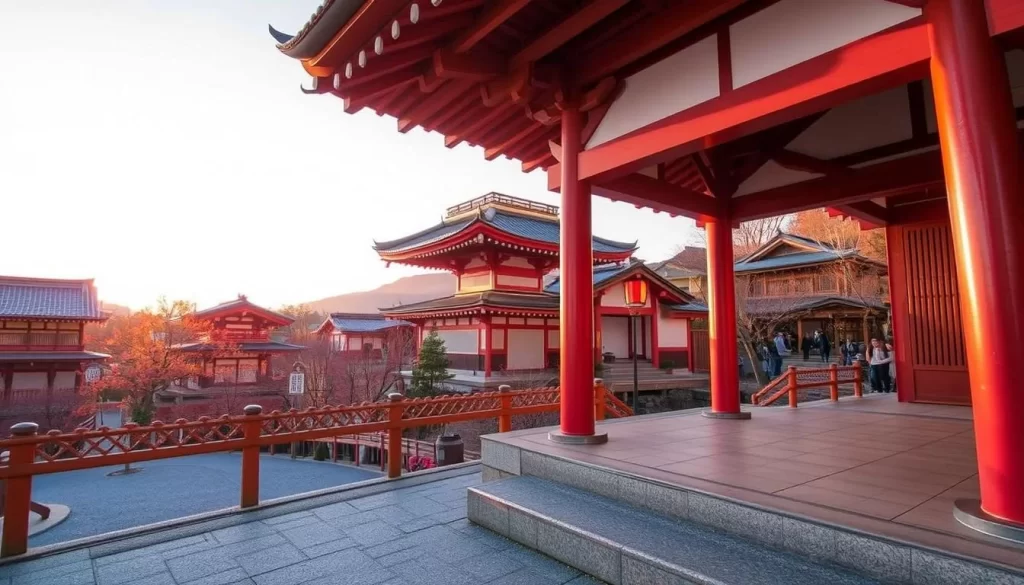
To make the most of your trip to Iwate, Japan, it’s essential to know the best months to travel. Understanding the seasonal variations and peak travel periods can help you plan a more enjoyable and less crowded trip.
Optimal Travel Windows for Different Activities
Iwate Prefecture offers a range of activities across different seasons. For outdoor enthusiasts, spring (March to May) and autumn (September to November) are ideal, with mild temperatures and fewer crowds. If you’re interested in winter sports, December to February is the best time, with several ski resorts operating in the region.
For those looking to enjoy summer festivals and warmer weather, June to August is the peak season, despite the occasional rain and humidity. It’s also worth noting that the rainy season, which typically occurs from mid-June to mid-July, can be a strategic time for budget travel if you’re not deterred by occasional showers.
Avoiding Typhoon Season and Peak Travel Periods
When planning your trip, it’s crucial to be aware of Japan’s peak domestic travel periods to avoid crowds and inflated prices. Golden Week (late April to early May) is one of Japan’s busiest travel periods, leading to crowded attractions and higher accommodation costs. Similarly, the Obon holiday in mid-August sees another surge in domestic travel.
The typhoon season, peaking from August to September, can impact weather conditions, although Iwate typically experiences less severe effects than southern Japan. By planning your visit during the shoulder seasons (late May-early June or late September-early November), you can enjoy pleasant weather while avoiding both peak travel periods and extreme weather conditions.
Must-Visit Seasonal Destinations in Iwate
The prefecture of Iwate transforms with the seasons, presenting visitors with a kaleidoscope of experiences that cater to various interests. Whether you’re looking for natural beauty, cultural immersion, or adventure, Iwate has something to offer in every season of the year.
Historical Sites and Natural Wonders
Iwate is home to numerous historical sites and natural wonders that are best appreciated during specific times of the year. For instance, the cherry blossom season brings forth breathtaking views at popular spots, making it an ideal time to visit. The prefecture’s rich history is reflected in its temples and traditional festivals, which are particularly vibrant during the spring and autumn season.
- Experience the beauty of cherry blossom at Iwate’s famous parks and gardens.
- Visit historical sites like the Hiraizumi temples, a UNESCO World Heritage Site.
- Enjoy the stunning natural landscapes, from mountains to coastlines.
Seasonal Highlights and Local Experiences
Each season in Iwate offers unique local experiences that allow you to connect with the prefecture’s culture and traditions. In the spring, you can participate in traditional rice planting at farms like Koiwai. Summer brings the opportunity to join in cherry festivals and enjoy local river fish. Autumn is the perfect time for apple picking and mushroom foraging, while winter offers experiences like making wanko soba and crafting traditional Nambu ironware.
- Join local festivals, such as the Tanabata celebrations in summer.
- Savor seasonal food experiences, from spring mountain vegetables to winter hotpot dishes.
- Explore the smaller cities and rural communities to discover authentic cultural immersion.
By embracing the seasonal rhythm of Iwate, you can enjoy a rich and varied travel experience that goes beyond mere sightseeing, allowing you to truly appreciate the beauty and culture of this unique prefecture.
Practical Travel Tips for Iwate’s Weather
When planning a trip to Iwate Prefecture, understanding the practical aspects of traveling in this region is crucial. Iwate’s diverse climate, ranging from the cold winters to the mild springs and autumns, and the hot, humid summers, requires visitors to be well-prepared.
Packing Essentials for Each Season
Packing the right clothing is essential for a comfortable trip to Iwate. In spring, you can expect mild temperatures, making it ideal for outdoor activities like hiking and cherry blossom viewing. Bring layers for cooler mornings and evenings. Summer is hot and humid, so light, breathable clothing and sun protection are must-haves. If you plan to visit during the autumn season, pack for cooler temperatures, especially in the mornings and evenings, and enjoy the fall foliage. Winters are cold, especially in the far north and Japanese Alps regions, so warm clothing, including a good coat, gloves, and hat, is necessary.
Transportation and Accommodation Considerations
Understanding the transportation options and accommodation choices in Iwate is vital for a smooth trip. The Tohoku Shinkansen provides fast access to Morioka from Tokyo year-round, taking about 2.5 hours. However, reservations are essential during peak travel periods like Golden Week and Obon holidays. Local train and bus services may operate on reduced schedules during winter, particularly in rural areas. Rental cars offer flexibility, especially for exploring the countryside in spring, summer, and autumn. However, winter driving requires experience with snow conditions. For accommodations, ryokan (traditional inns) offer unique seasonal experiences, such as kotatsu (heated tables) in winter and open-air baths with seasonal views. Booking in advance is recommended, especially for smaller ryokan and rural accommodations that may close during the off-season.
The best time to visit for accommodation deals is typically late autumn (November) and winter (January-February, excluding New Year), when occupancy is lower, except in ski resort areas. Planning your trip during these periods can help you save on accommodations.
Conclusion
With its distinct seasons, Iwate Prefecture is a year-round destination that caters to various interests and preferences. Whether you’re looking for the cherry blossom season in spring, the vibrant colors of fall, or the serene beauty of winter, Iwate has something to offer.
The best time to visit Japan, specifically Iwate Prefecture, largely depends on your personal preferences and the activities you enjoy. For those who love mild temperatures and hanami (cherry blossom viewing), spring (April-May) is an ideal time. If you prefer hiking, cultural festivals, or escaping the intense heat, summer (June-August) might be your best bet, just be prepared for the June rainy season.
For a more comfortable travel experience with spectacular autumn colors, consider visiting during fall (September-November). If you’re a fan of snow sports or hot spring experiences, winter (December-March) transforms Iwate into a snowy wonderland. By avoiding peak domestic travel periods like Golden Week, Obon, and New Year holidays, you can enjoy a more authentic experience with lower prices and fewer crowds.
Photography enthusiasts will find cherry blossom season in spring or the fall foliage period particularly captivating. Food lovers might prefer autumn for its local specialties or winter for hearty regional dishes. Adventure travelers can enjoy hiking and water activities in summer or world-class powder snow for various snow sports in winter.
Ultimately, Iwate Prefecture’s four distinct seasons each offer their own unique charm, making it a versatile destination worth visiting at any time of the year. So, plan your trip according to your preferences and enjoy the diverse experiences that Iwate has to offer.
The above is subject to change.
Check back often to TRAVEL.COM for the latest travel tips and deals.
